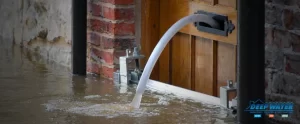Molds are known to grow in any area of the home, and your window sills are not exempted. Actually, the place is a common breeding ground of the fungi because of the moisture that often develops in this particular part of the house.
However, molds on the window sill could also be due to other factors apart from moisture. This is something that you should try to find out. If not, the fungi could spread to other home areas where they can cause serious damage, not only to your home but even to your health and that of your family.
Causes of Window Sill Molds
Excess moisture is the main reason for mold around the windows. Removing them by cleaning the area is not enough. The source of the moisture has to be identified so mold growth can be stopped completely.
Below are the common reasons you have excess moisture at home.
1. Leaky Pipes

Yes, a leaky pipe somewhere in your home can cause molds to grow on your window sills. It may seem unlikely given that pipes are mostly nowhere to be found near windows, but it’s actually caused by a number of things simultaneously happening–from the leaky pipe that makes the air indoors more humid and the heat from the outside radiating through the window–that creates a perfect environment for molds to grow on the window sills.
2. Faulty HVAC Unit
Mold growing on window sills could also be due to your HVAC not working as it’s supposed to. As we all know, a HVAC system’s main purpose is to help maintain air quality indoors. When an HVAC unit is faulty, say, it doesn’t provide proper ventilation or if the air conditioning is leaking, the indoor air quality is compromised and molds can pop out anywhere in your home, including your window sills.
3. Damaged Window Frames

These can also cause molds on the window sill, and this is most common during the rainy season. A damaged window frame allows rainwater to seep through the window, moistening the sills. If this happens, it’s only a matter of time before molds start growing there.
4. Indoor Steam
This usually depends on the temperature inside the home. Various household activities, especially cooking, can increase the temperature and produce steam. This, in turn, adds moisture to your indoor air, which would attract molds in your home.
5. Rising Damp
This is a common problem in concrete home walls, and is often due tocapillary action, which is a phenomenon where groundwater comes up from the floor, moves to your walls, and over to the windows where moisture is produced.
6. Poor Air Circulation
When airflow is poor or insufficient, it can cause humidity to increase. This can lead to condensation, which is an ideal condition for molds, allowing them to grow in places like your window sill.
How To Clean Molds from Window Sills
When your window sills are filled with molds, you have to remove them right away. Ideally, you should refer this tomold cleaning experts, but if you prefer to do it on your own, below are the things that you have to keep in mind.
1. Prepare yourself.
This means getting the stuff that will ensure your safety as you begin to deal with mold around the windows. At the most basic, you should have protective equipment that includes masks, goggles, gloves, and suits.
2. Scrub the window.
After wearing your protective gear, start cleaning the window by scrubbing it gently using a mild detergent. If this is not available, some of the alternatives you can try are baking soda and vinegar which you can mix together, and tea tree oil, which you can spray on the window sill. Whichever you decide to use, remember to wipe your window sill afterwards before allowing them to dry.
3. Rinse the window.
Using clean water, wash and rinse the scrubbed window sill. Leave this alone afterwards so it can dry up.
How To Prevent Mold in Windows
After cleaning the window sill and removing the resident molds, it’s important that you work on keeping the fungi away. Consider the following preventative measures:
1. Use a dehumidifier.
This is an effective tool ingetting rid of moisturefrom the indoor air and can also reduce condensation during the cold months. Dehumidifiers also help make indoor breathing easier and are especially helpful for those suffering from asthma or other respiratory conditions.
2. Install exhaust fans.
Exhaust fans aid in sucking moisture and steam, pushing them outwards so you can have better home ventilation. For best results, exhaust fans should be placed in humid areas of the house like the bathroom and the kitchen.
3. Open the windows.
This should be done daily for at least 15 minutes up to an hour. This should help produce better airflow, as contaminants like mold spores get pushed out while fresh air is pulled inside.
4. Clean the windows.
There are different types of molds on window sills, and many of them can stage a comeback if you just do a one-time cleaning job. Home windows should regularly be cleaned to ensure that molds don’t get the chance to make a revisit.
Key Takeaway
Getting rid of molds on the window sill by yourself is possible, although this can be risky to a certain extent. This is especially true if you don’t have sufficient protective equipment, and you happen to be dealing with harmful mold types like black molds.
If you do a sloppy cleaning job, the fungi can move to other areas of your house where they could find more nourishment. This could make the situation worse, especially if you accidentally inhale the spores. To prevent this from happening, it’s best if you get the services ofmold remediation experts.
Remove home molds quick and easy with Deep Water Emergency Services and Mitigation.
Molds inside the home are dangerous regardless where they are located. They won’t only damage the structural integrity of your property, the fungi can also cause you and other members of your household to develop allergic reactions.
Deep Water Emergency Service and Mitigation is the expert to contact if you have molds at home. We have a dedicatedmold mitigation Denver, CO, team that can provide you with reliable and lasting solutions. Call us today.






